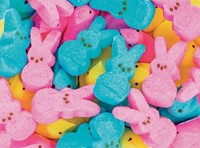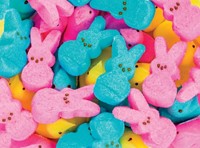Advertisement
Grab your lab coat. Let's get started
Welcome!
Welcome!
Create an account below to get 6 C&EN articles per month, receive newsletters and more - all free.
It seems this is your first time logging in online. Please enter the following information to continue.
As an ACS member you automatically get access to this site. All we need is few more details to create your reading experience.
Not you? Sign in with a different account.
Not you? Sign in with a different account.
ERROR 1
ERROR 1
ERROR 2
ERROR 2
ERROR 2
ERROR 2
ERROR 2
Password and Confirm password must match.
If you have an ACS member number, please enter it here so we can link this account to your membership. (optional)
ERROR 2
ACS values your privacy. By submitting your information, you are gaining access to C&EN and subscribing to our weekly newsletter. We use the information you provide to make your reading experience better, and we will never sell your data to third party members.
Environment
What’s that Stuff
Ice Cream
The finer points of physical chemistry and flavor release make this favorite treat so sweet
by Bethany Halford
November 8, 2004
| A version of this story appeared in
Volume 82, Issue 45
I scream; you scream; we all scream for ice cream. The reason is simple: Ice cream is an excellent example of the whole tasting better than the sum of its parts.
By weight, ice cream is composed primarily of water (from milk and cream) with sweeteners such as corn syrup or sugar, flavorings, emulsifiers, stabilizers, milk solids, and milk fat. Milk fat gives ice cream its distinctive richness and characteristic smooth texture. Federal law mandates that anything labeled ice cream must contain at least 10% milk fat by weight. Some premium brands have as much as 20% of this high-calorie component.
These ingredients account for only part of what you find in a carton of ice cream, however. That's because by volume, 20 to 50% of ice cream is air whipped into the mix during the early stages of the freezing process.
"There are no real chemical reactions that take place when you make ice cream," says H. Douglas Goff, an ice-cream expert and professor in the department of food science at the University of Guelph, in Ontario, "but that doesn't mean there isn't plenty of chemistry."
From a physical chemistry perspective, Goff says, ice cream has a colloidal structure. Tiny air bubbles and ice crystals are dispersed among liquid water and a network of destabilized fat globules. The structure contributes to the taste. "When you bite into ice cream, how the flavor is released into the mouth probably is a function of structure," says Richard W. Hartel, professor of food engineering at the University of Wisconsin, Madison.
Initially, the milk fat exists as tiny globules in the milky starting mixture. Milk proteins on the globules' surface work as an emulsifier to keep the fat in solution. To make the ice-cream structure, these fats need to be destabilized so that they coalesce into larger networks. "When two partially crystallized fat globules come together, like in ice cream, they form a partially coalesced structure," Hartel explains. "We sort of envision them as grape clusters, with some connectivity, but the crystalline fat prevents complete coalescence."
Ice-cream makers use a different emulsifier that replaces the surface proteins and aids in forming the network. Egg yolks were originally used as this destabilizing emulsifier, but now, ice-cream manufacturers use mono- and diglycerides as well as the sorbitan ester Polysorbate 80.
Whipping the mixture introduces air bubbles and also helps the fat globules to coalesce. These fat globules, in turn, help stabilize the air bubbles.
Ice crystals--the other major component of ice cream--begin to form when the mixture is cooled after whipping. Even though it's made of 55 to 64% water, Goff explains, the ice-cream mix won't freeze at 0 °C. Instead, it has to be cooled to even lower temperatures before any crystals form.
This freezing-point depression is a colligative property arising from the sugars and salts in the ice-cream solution. As crystals of pure ice form, the solution's sugar and salt concentration increases, depressing the freezing point further. Goff says that, even at the typical ice-cream serving temperature of –16 °C, only about 72% of the water is frozen. The unfrozen concentrated solution component keeps the ice cream "scoopable" and also keeps ice-cream eaters from breaking their teeth when they bite into the treat.
The size of the ice crystal is critical to the ice cream's quality. For a smooth consistency, ice crystals should be small. Large crystals lead to a coarse, grainy texture. Crystal size depends on how quickly the ice cream is frozen. Slow freezing gives a small number of large crystals, whereas fast freezing promotes a larger number of nucleation sites and, consequently, a large number of small crystals.
Of course, just because those ice crystals are small when the ice cream leaves the factory doesn't necessarily mean they'll still be small when they reach your banana split. If the temperature increases during shipping, storage at the grocery store, or even as the ice cream is transported to a consumer's freezer, those tiny crystals can melt and recrystallize into larger structures. "The manufacturer can do everything right, but the product can still be bad when the consumer gets it because of bad retailing," Goff notes.
To curtail this problem, manufacturers add stabilizers such as plant-derived guar gum and carageenan. The stabilizers also prevent the air bubbles from collapsing and promote good flavor release.
Flavor chemistry is also important to ice-cream manufacturers. Because ice cream is a complex mix of fatty and watery components, manufacturers often have to use several different flavorings just to get ice cream with a desired taste. Hartel says a former student of his, who works for a national ice-cream maker, had to blend four different types of vanilla to achieve the perfect taste for the company's new brand of vanilla ice cream.
According to Hartel, ice-cream makers usually develop products through trial and error. However, he adds, "the more you understand about chemistry, the better you can do product development." For example, Hartel says, if a company were developing a low-fat ice cream, they could not rely on the fat-soluble flavorings they use for their full-fat products. Instead, they would aim to use more hydrophilic flavorings.
Ice cream may seem like an old-fashioned dessert, but Goff and Hartel say that the confection and its chemistry are constantly evolving. The past two decades have brought about major advances in food safety and hygiene, Goff says. Both he and Hartel have been using advanced microscopy techniques to quantify the effects that stabilizers and other additives have on ice cream's microstructure--research that could lead to even tastier ice cream. Now, I can scream for that.






Join the conversation
Contact the reporter
Submit a Letter to the Editor for publication
Engage with us on Twitter